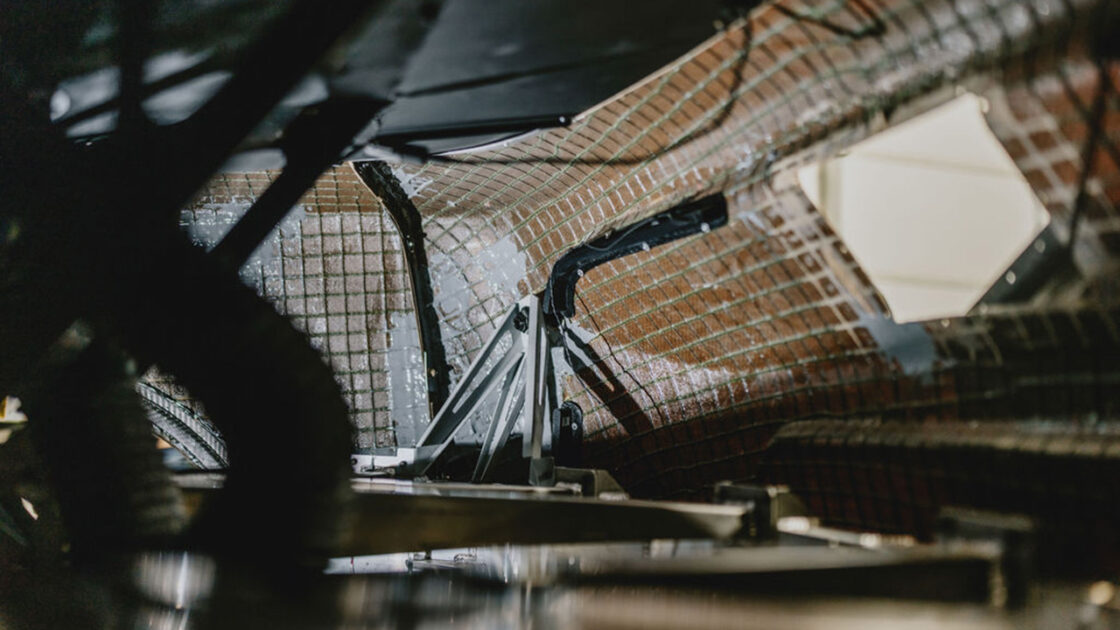Here’s What It’s Like To Drive NASCAR’s Electric Race Car

NASCAR isn’t going electric anytime soon, but it’s been asking the question: what if?
The racing series unveiled an all-electric prototype vehicle at the Chicago Street Race that’s based on the seventh generation Cup Series car, but looks nothing like it.
It wears the body of a crossover SUV, like those that are popular in the electric vehicle space, with a roof-mounted wing that makes it look more like a rally car than a stock car.

The chassis is a derivation of the Cup Series car’s, but it has a taller roof and new front and rear subframes designed to accommodate the drivetrain developed with ABB, which is a tri-motor all-wheel drive setup that can be turned up to 1,300 hp.
Read Also: HERE’S WHAT NASCAR’S ELECTRIC RACE CAR SOUNDS LIKE

That’s nearly twice the power of a Cup Series car’s V8 and it draws its power from a 78 kWh battery pack that rides shotgun. The vehicle weighs around two tons, making it about 600 pounds heavier than a Cup Series car, but it promises to be nearly as fast around some circuits. During testing at Martinsville, it was running laps just a few tenths of a second behind a Cup Series car’s time.

Cup Series veteran David Ragan, who is the car’s primary development driver, says the steering and the feel of the car are similar to a Cup Series car, but that it gets around the track in it’s own way.
“When you mash the throttle and when you put on the brakes it’s a lot different,” Ragan told American Cars And Racing on a visit to New York with the car.” “It has a ton of acceleration and with the brake regeneration capability, it stops on a dime.”
CAUTIONARY TALE? KYLE BUSCH EXPLAINS HOW A HYBRID NASCAR CAR MIGHT WORK
That regeneration charges the battery, which means the car is ideally suited for short tracks, road courses and street circuits with a lot of braking where it can recapture some of the energy lost under acceleration. Ragan said it could run for 45 mins to an hour in its current configuration on those sorts of tracks, which would be long enough to put on a support race.
He called the all-wheel drive a “game changer” that helps put the power down coming out of a corner, and thinks the car has the potential to upstage the Cup Seres cars on lap times, with one particular area that needs a little work.
CLICK HERE TO FOLLOW AMERICAN CARS AND RACING ON X
“Mid-corner rolling speed, so when you are off the throttle, you’re off the brakes and right at the apex of the corner, this car is a few hundred pounds heavier and we were just a little bit slower at your minimum speed.”

He’d also like to see how it does on a larger track and may get his chance soon. A representative from ABB said it’s next demonstration run may happen at Phoenix Raceway during the NASCAR Championship Weekend.
“I can’t wait to get to a bigger race track where I can hold the throttle down for more than a few seconds, but at a track like Martinsville, you can have all the speed that you want in a very short distance.”

The project isn’t just about testing the electric drivetrain tech, it’s bodywork is made from a flax-based composite designed by Bcomp that combines its ampliTex™ technical fabrics in with powerRibs™ that are inspired by the vein structure of leaves. It weighs about the same as the material NASCAR currently uses, but its production reduces carbon emissions by 85% and it doesn’t shatter when it breaks, which could improve safety in an accident.
See It: ELECTRIC NASCAR CAR’S NAKED FLAX-BASED BODY REVEALED
The car also wears the number 35, which is a reference to NASCAR’s goal of achieving net zero emissions across its operations by 2035, which will likely include switching to a sustainable racing fuel for its internal combustion engines if it doesn’t go all-electric by then.
SUBSCRIBE TO THE AMERICAN CARS AND RACING YOUTUBE CHANNEL









